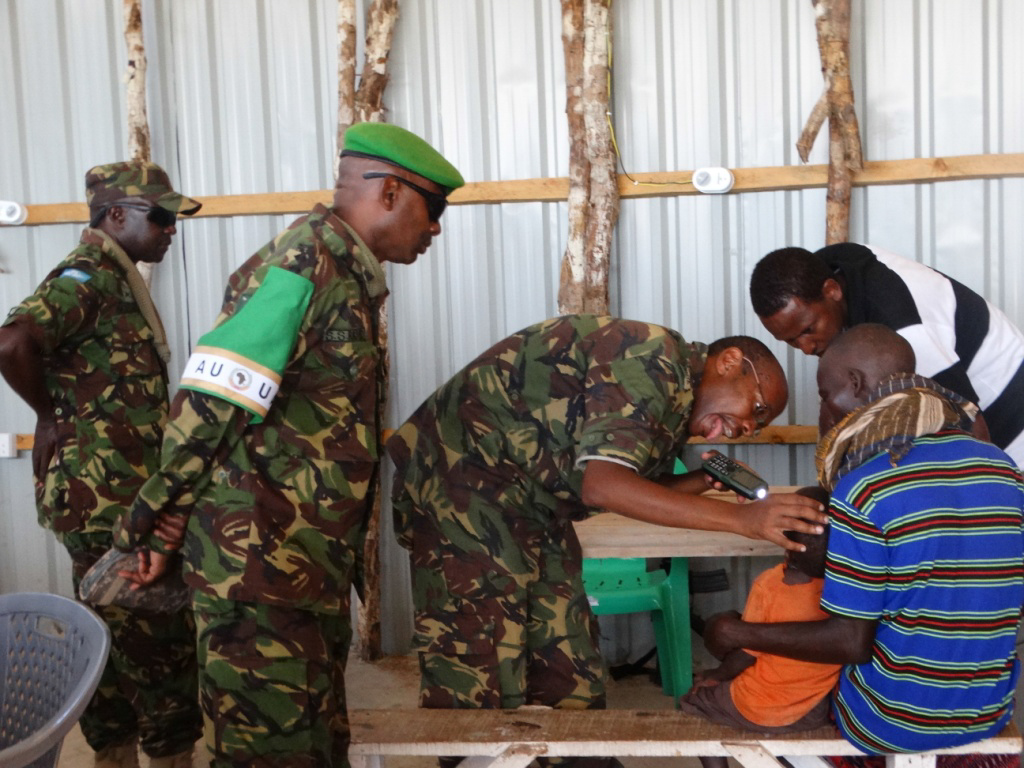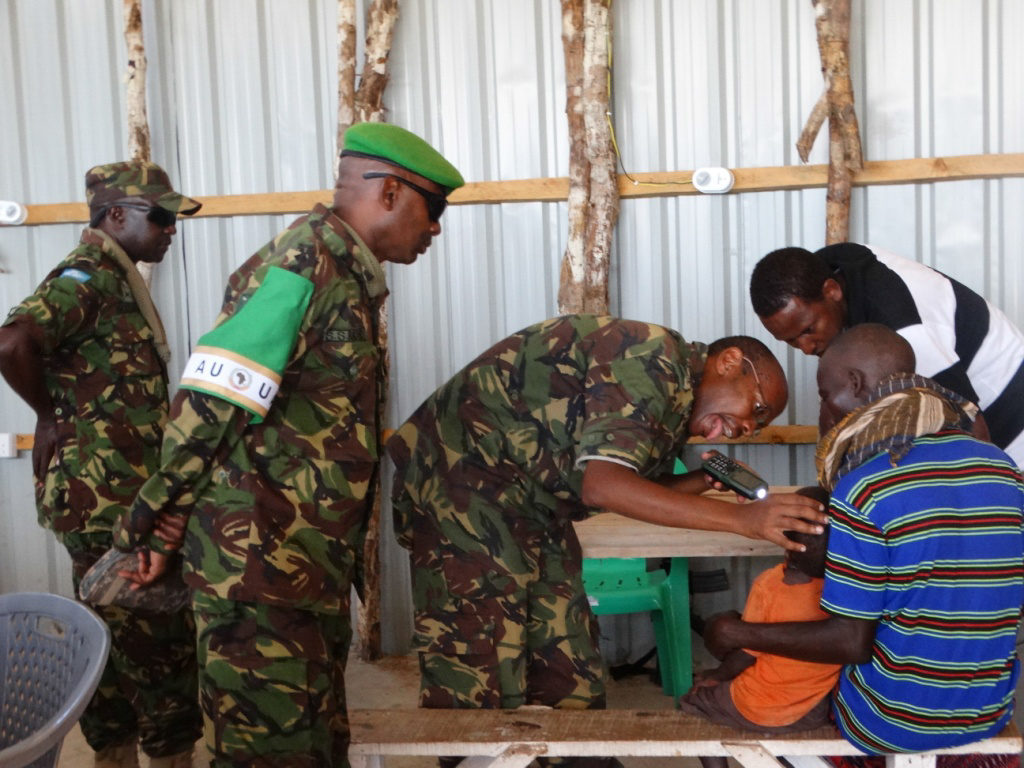UN support for cholera-stricken Somalia includes raw sewage runoffs, hazardous waste dumps


More than a year after United Nations peacekeepers were condemned by their own auditors for heedlessly dumping sewage, untreated waste water, garbage, medical waste and other dangerous materials in a wide array of war-torn countries, the same horrific health practices have surfaced again, in battered Somalia.
The main difference this time: the accusations are levelled not at a major force of blue-helmeted U.N. peacekeepers but at a 595-person U.N. mission known as UNSOS, providing infrastructure and field support—including safe disposal of sewage and waste– to some 30,000 or so African Union and Somali National Army forces that are battling Islamist Al Shabaab extremists and struggling to create order in one of the world’s most dangerous countries.
In effect, UNSOS—the acronym stands for United Nations Support Office in Somalia—is the infrastructure backbone of the regional peacekeeping effort, supplying everything from facilities and communication to air and ground transportation services, finance and budgeting, not to mention “waste management services,” as well as sewage and wastewater treatment and a variety of other “infrastructure related to the environmental services.”
The toxic outcomes, however, in a country with some 1.6 million internally displaced persons, where 50 percent of the population is deprived of water and sanitation, and that is also ravaged by endemic cholera and other infectious diseases, were about the same as other countries where U.N. peacekeepers mishandled the effort, according to watchdogs from the U.N.’s Office of Internal Oversight Services (OIOS).
The auditors visited Somalia from July to October 2017 and issued a report covering UNSOS activities from January 2015 to the end of last June. The report was completed last December but made public only in mid-January, 2018.
Based on the auditors’ report, it is hard to imagine a lapse in sanitary and environmental practices that UNSOS was not committing. Among them:
– Lack of any waste management planning to speak of by UNSOS, which had not gotten around to making assessments of the task at five out of six African Union troop headquarters and six out of seven AU mission office locales. During the audited period, the U.N. operation didn’t have a full-time waste management officer to deal with the issue. One was appointed in July 2017—about the time the auditors arrived. So was a new chief officer for water and sanitation.
UNSOS was also charged with raising environmental awareness among the non-U.N. peacekeepers; the main result auditors could find was a poster campaign urging water conservation at the main headquarters in the capital of Mogadishu. UNSOS likewise didn’t have a full-time environmental officer, even though the U.N. has made much of its heightened environmental awareness in peacekeeping after issuing a glossy report on the topic in 2010. The position was finally filled in June 2017.
– No sewage treatment and disposal for thousands of African Union troops in a variety of Somalian centers, including parts of Mogadishu. Instead troops relied on “simple makeshift latrines made from trenches, roofing steel sheets and wood,” according to the auditors’ report. Result: untreated sewage and cooking and cleaning water “flowed out through rainwater drains and trenches into the surrounding environment.” In one regional headquarters, untreated sewage was collected in an oxidation pond, “even though an internally displaced persons’ camp” was close by, the auditors noted.
One of the other centers with inadequate water treatment was the city of Baidoa, capital of Somalia’s South West State, which is an epicenter of a Somalian cholera epidemic that had affected some 60,000 people, and killed more than 800 in 2017.
Substandard quality control, even when wastewater was treated. UNSOS had only one laboratory, operated by a contractor, to monitor the quality of treated wastewater at its Mogadishu headquarters. (There was no laboratory in cholera-stricken Baidoa.) The contractor, however, was only testing for two of several usually-required water quality indicators. There was no testing for fecal coliform bacteria, for example, a major disease vector; nor for contaminating oils and greases. “This was because UNSOS had not provided the necessary equipment and reagents to the contractor,” the U.N. auditors noted. No record of test results were kept in any event, and the contractor-run treatment plants were not regularly inspected.
In Baidoa, treated wastewater was simply emptied on the ground in the UNSOS headquarters area. In Mogadishu, treated wastewater was thrown into the nearby ocean—unless, as OIOS auditors noted, it came from broken hospital wastewater pipes that spilled it on the ground, along with chemicals from a hospital laboratory.
Hazardous liquids like used oil were stored in unlabeled, “deteriorated” drums by the waste disposal contractor. UNSOS never saw the records of the volume of used oil the contractor collected; it was deemed too dangerous to retrieve them from the contractor’s office outside UNSOS’s Mogadishu compound, the auditors reported. (Why the contractor did not bring the records to UNSOS is not discussed in the report.)
– Stockpiles of toxic junk, like “electrical waste, used tires, batteries and vehicle spare parts and scrap metals” were simply abandoned around various peacekeeping camps, or “stored haphazardly on the ground,” the report says.
The good news appears to be that ever since the OIOS inspectors turned up—albeit many months after they had filed equally dismal reports from other U.N. peacekeeping sites—a scramble began for UNSOS to get its act together.
A U.N. peacekeeping spokesperson told Fox News that nearly a score of wastewater treatment plants are now operational in Somalia, along with a number of solid waste management facilities. The last planned wastewater plans are expected to be working by April 2018, with more to be added “as required.” New toilets and washing facilities have been built to replace latrines, the spokesperson added. New incinerators are on the way. So is a new contractor “for environmental management services,” who is supposed to be at work by March.
All told, the U.N. has now budgeted $3.5 million for waste management, and another $1.5 million for projects to “help reduce the environmental impact of UNSOS.” Another $10.7 million or so has been budgeted for 2018-2019 for cleanup, improved energy supply, and waste management, “in line,” as the spokesperson put it, “with [U.N. peacekeeping’s] Department of Field Support environmental vision to maximize efficiency in the use of natural resources and to minimize risk to people, societies and ecosystems.”
Adding to the new crew of concerned officials, UNSOS intends to add an “Occupational Health and Safety Officer” this year, along with two experts on “environmental management and engineering.”
To be on the safe side, however, UNSOS set a deadline of December 1, 2018—nearly a year after the OIOS report was produced—for getting most of its major changes in place, including final production of an actual waste management plan.
As the U.N. peacekeeping spokesperson told Fox News by way of explanation, “logistics and facilities delivery are very complex in Somalia. The supply chain is long and complex and often involves dangerous routes,” some of which have been “closed for a long time.”
NB: This is an abridged news report. Find more info. on http://www.foxnews.com/world/2018/01/31/u-n-support-for-cholera-stricken-somalia-includes-raw-sewage-runoffs-and-hazardous-waste-dumps.html
